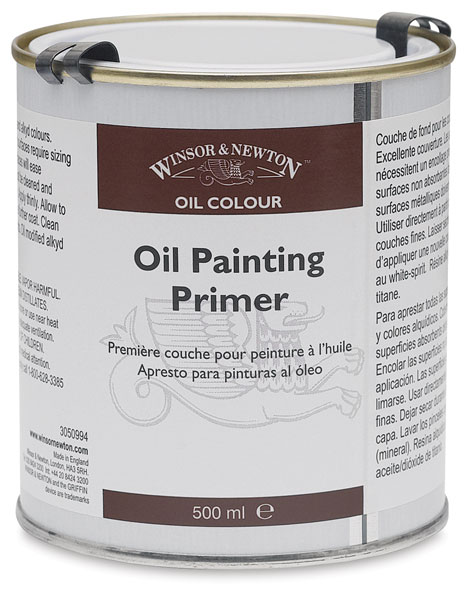I apologize that I don't have any exciting images for this post, but I wanted to quickly share some thoughts on painting supports.
Recently, I have become dissatisfied with most
pre-made canvases. Frequently I've encountered problems including very loose canvas, canvas with thousands of pinholes, stretchers that are warped, and rough-textured priming. On top of this, most
pre-made canvases are primed with acrylic priming, which may not be the best ground for an oil painting, and many oil-primed canvases are made with a ground that contains zinc, another no-no. The best
pre-made
surfaces I've found are not cheap.
Therefore, I decided to take the matter into my own hands!
Solid supports, such as wood or copper, don't move and therefore have an advantage over canvas, which flexes and therefore can exacerbate weaknesses in the paint
layers. However, the weight of such supports can prove problematic at larger sizes, so I decided to use a polyester canvas on my large (4ft and larger) paintings. The word 'polyester' certainly doesn't bring to mind anything fine-art related, however I feel it will be a very sound support for my paintings. The reasons are as follows:
- Polyester does not react to moisture in the air or temperature changes, therefore it will not have problems that paintings on linen and canvas do when they expand and contract with those changes. This canvas will not loosen or require future tightening!
- Mold does not grow on, nor do bugs eat polyester.
- Oil itself does not cause polyester do rot, as it does natural fibers. So, even if some oil makes it through and touches the canvas (like would happen if there was a pinhole) it will not affect the support negatively.
The only thing that will apparently deteriorate polyester is UV light. So long as the canvas front is covered in paint, and the back is protected from light, polyester should outlast other fabrics as a support. Ideally, I would glue the polyester canvas to a wood panel, but again size right now is preventing this.
I happened to find artist's unprimed polyester at Utrecht in a sample pack, and I personally liked the tight weave. There were no pinholes to be seen and the canvas is very smooth. I expected the canvas to be flimsy and stretchy (because I was thinking of polyester clothing) but it was rather very much like a regular cotton canvas.
With the assistance of my apprentice and a friend at the studio, Ron Smith, we stretched a 4' x 6' canvas with the polyester. It seems easier to get the fabric to be very tight than it does with linen or cotton. I have a canvas Ron stretched that is so firm it nearly feels like a panel, and my large canvas is like a drum, *literally.* I love it.

I primed a couple smaller canvas with oil primer alone, but on the large one I decided to experiment with some PVA Size. It is not neccessary to size polyester before oil priming, but it does help the primer to go on smoother. Without the size, the fabric really seems to 'grab' the primer. I used Gamblin's size, but am interested in trying others. I use PVA size as opposed to rabbit skin glue because it also does not react to temperature or humidity.

For my primer, I used Windsor and Newton's oil painting primer because it does not contain zinc (which can cause cracking/delamination) or lead (which is a health hazard.) It is a titanium/alkyd primer which dries in 24 hours. It does smell quite strong, so use in a well ventilated area, ideally that you can vacate for some time after application. Again, I am interested in trying some other oil primers, but I will always steer clear of anything containing zinc.

The resultant layer of primer is very scratchy and rough, so I used a palette knife to smooth each layer. I have yet to paint on this surface since I just finished it up today, but I will report back once I give it a try.
It does take some time to prepare a canvas this way, and nearly always would rather have that kind of work done for me, but this way I am confident that I am doing everything I can to make sure my work is archival and therefore worthy of purchase, and hopefully this will also be the most enjoyable surface to paint on!
 The last couple days I worked on this central figure in the composition. I still have a long way to go with it, but getting closer! Also I need to get better pictures. I have decided to go ahead and get started on my next composition while I continue to work on this one. There's still so much more I want done on this, yet I think it's time to get a move on with other paintings.
The last couple days I worked on this central figure in the composition. I still have a long way to go with it, but getting closer! Also I need to get better pictures. I have decided to go ahead and get started on my next composition while I continue to work on this one. There's still so much more I want done on this, yet I think it's time to get a move on with other paintings.






